This result of disturbances in the functioning of the sebaceous glands is difficult not to notice. Acne requires timely contact with a dermatologist for prescriptions. There are many reasons for its appearance, as well as types. Each type of acne dictates an algorithm for combating rashes.
What is acne
A chronic disease of the hair follicles and sebaceous glands with excess sebum production is called acne. In medicine there are other names - acne, acne vulgaris, comedones. Symptoms most often occur during puberty - between the ages of 13 and 18 years. Girls suffer more from acne, but their skin clears up faster. Young men are diagnosed with complicated skin rashes, which by the age of 30–40 develop into late acne.
The sebaceous glands produce sebum. First, it enters the hair follicles, then is released onto the surface of the skin. With increased activity of the sebaceous glands or keratosis, the pores become clogged with plugs. Sebum is no longer secreted and accumulates in the hair follicle - whiteheads appear on the face. When the ducts are blocked and bacteria get under the plug, pus accumulates and the acne becomes inflamed.
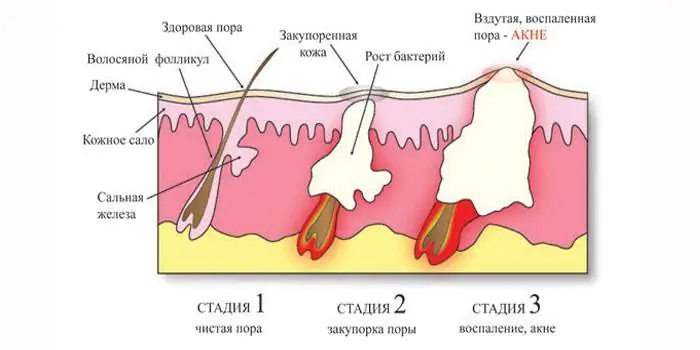
Types of acne on the face
Acne vulgaris occurs in every person. Most often localized on the cheeks, forehead, chin. The following types of skin rashes are distinguished:
- Open (black dots). Plugs in the sebaceous glands, the pigment melanin gives them black color.
- Closed (wen). Located in the epidermis, they have a dense structure and white color.
- Papules. Nodular formations of red color with purulent contents are localized in the epidermis.
- Pustules. These are pimples with a white head that contain pus. The surrounding tissues are red, inflamed, and painful on palpation.
Classification of acne according to pathogenesis and symptoms:
- Retention. A harmless type of disease (only an aesthetic defect).
- Papulopustular. Papules and pustules of a purple hue, 2–5 mm in size.
- Cystic. A complicated form that leaves scars on the face. The skin is inflamed, acne and pus merge into groups, forming subcutaneous passages.
- Fulminant. A rare pathology with damage to the digestive tract, anorexia, muscle pain, and high fever. It most often develops in adolescents 13–18 years old.
- Keloid.Men suffer; uneven furrows and lumps remain on the face. Pustules and papules are painful and reach 1–4 mm in size.
Types of comedones in severe forms of the disease:
- Conglobate. Cystic formations that quickly spread throughout the skin.
- Indurative. Severe acne is accompanied by inflammation affecting the deep layers of the dermis.
- Phlegmonous. Vulgar acne is filled with pus and affects large areas of facial skin.
- Abscessing. The formations look like boils, painful when touched. They contain pus and form atrophic scars after opening.
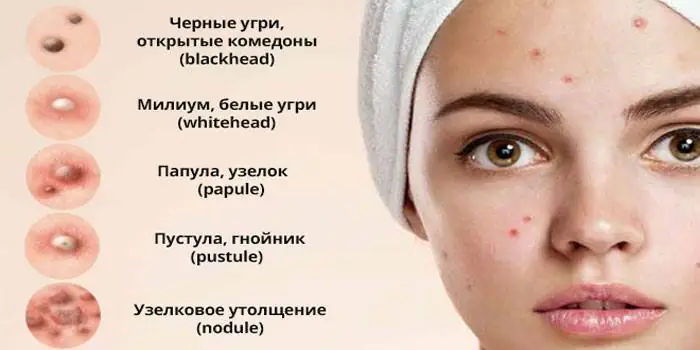
Acne severity
The effectiveness and speed of treatment depends on the stage of the pathology, so it is better not to treat acne. There are 4 degrees of rash:
- First. Blackheads are few in number, papules are without pus, and there are no unpleasant sensations on the skin.
- Second. The appearance of pustules, numerous papules, inflammation of the skin with redness and pain when touched.
- Third. Enlarged pustules with purulent contents, intense inflammatory process involving large areas of facial skin.
- Fourth. Confluence of pustules, numerous papules, deep boils, inflammation, redness and peeling of the epidermis.
Why do acne appear on the face?
Intense production of androgens during adolescence contributes to the appearance of acne. Physiological causes of pathology:
- hormonal changes in the body of pregnant women, adolescents, women during menopause and before menstruation;
- taking oral contraceptives (birth control pills);
- drug therapy (long-term use of barbiturates, lithium and iodine preparations);
- a lot of fatty, smoked foods, eating fast food;
- incorrectly selected cosmetics (no “non-comedogenic” label);
- violation/non-compliance with personal hygiene rules (poor exfoliation of the stratum corneum of the epidermis);
- environmental factor (gas contamination, dustiness of the environment);
- genetic factor (hereditary predisposition).
Why acne appears on the face:
- Diseases of the gastrointestinal tract (GIT). Gastritis, increased activity of Helicobacter pylori infection.
- Impaired secretion of the sebaceous glands. Intense production of sebum - a favorable environment for the development of acne.
- Demodecosis. Increased activity of demodex mites.
- Attachment of a secondary infection.Pathology develops when the sebaceous glands are disrupted.
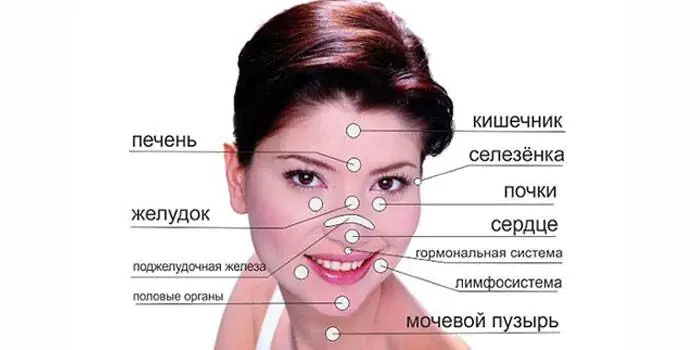
Treatment of acne on the face
A dermatologist will help you cope with this problem. Comprehensive treatment begins with proper care of problem skin. The main goal is to stop inflammation, prevent new rashes, and speed up recovery.
The choice of treatment regimen depends on the severity of symptoms and the stage of acne.
Effective methods for treating comedones:
- therapeutic diet;
- drug therapy;
- cosmetic procedures;
- folk remedies.
Part of the complex treatment is local therapy. For any intensity of rashes, the dermatologist prescribes an anti-acne cream or ointment, which relieves inflammation, relieves pain, and inhibits the spread of infection. Salicylic acid, benzoyl peroxide, resorcinol, sulfur and zinc derivatives are welcome in such medications. Effective groups of drugs for external use:
- monocomponent retinoids (Differin, Zorak, Klenzit);
- retinoids with antibiotic (Klenzit-S) or benzoyl peroxide (Effezel);
- preparations based on azelaic acid (Skinoren);
- external agents with salicylic acid(Clerasil series of products).
In severe cases of seborrhea, a course of tablets is prescribed. If acne on the face appears against the background of gastrointestinal dysfunction, infectious and inflammatory processes, Acnecutan capsules and semi-synthetic antibiotics Doxycycline, Erythromycin, Tetracycline are prescribed. In case of hormonal imbalance, a course of oral contraceptives is recommended (Yarina, Zhanine), and in case of late acne in adults, the androgen blocker Spironolactone is recommended.
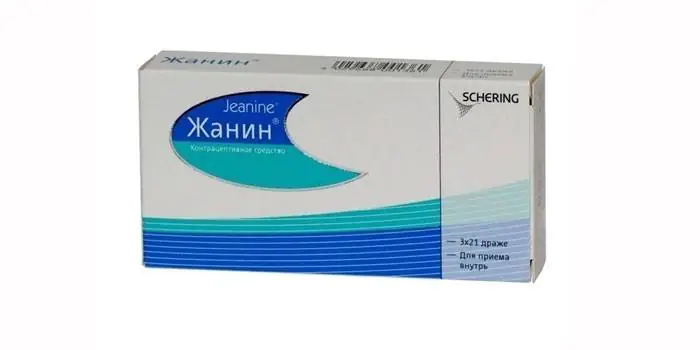
Beauty sessions are combined with local treatment, nutritional correction and compliance with the rules for caring for problem skin. Effective cosmetic procedures:
- Laser therapy. The laser has a bactericidal effect, removes excess sebum, enhances collagen production, evens out facial contours, and does not leave scars.
- Ozone therapy. Injection with an ozone-oxygen mixture relieves inflammation, stimulates blood circulation, and restores the protective functions of facial skin.
- Chemical peeling with fruit acids. Removes the stratum corneum, destroys bacteria, and relieves the symptoms of acne.
- Microdermabrasion of the face. Expands pores, removes the stratum corneum, nourishes damaged tissue, removes wrinkles.
- Light therapy. The stream of light destroys pathogenic flora that causes acne.
Treating acne at home
Conservative treatment at home in the absence of individual intolerance to the components includes the following over-the-counter drugs:
- Alcohol solution of salicylic acid 1%. Wipe the skin 2 times a day for no more than 7 days.
- Baziron AS. Apply small portions of the gel to clean, dried skin. Carry out the procedure 3-4 times/day. The course of treatment is individual.
- Zenerite. Wipe your face with lotion before going to bed, repeat the procedure every other day. The course of treatment is up to 10–12 weeks.
General recommendations for treating acne at home:
- Eliminate fatty, fried, salty, spicy, smoked foods from the menu, limit baked goods and confectionery.
- Avoid alcohol, energy drinks, carbonated drinks, and strong coffee.
- Do not squeeze out acne, otherwise a secondary infection may occur, suppuration, and the formation of scars.
- Wash your face at least 2 times a day with warm water, use mild soap or alcohol-free cleansing lotions.
- To remove blackheads, consult a professional cosmetologist.
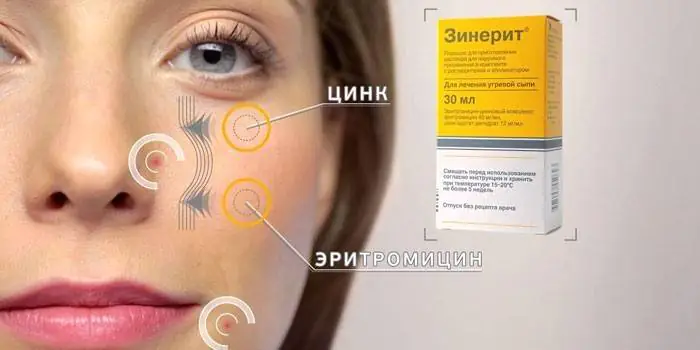
Alternative treatment is not always effective, especially if folk remedies are used independently. It is advisable to combine them with methods of official medicine (tablets, ointments, creams), and cosmetic procedures. Self-use is possible for prevention. Recipes for facial beauty and health:
- Cucumber lotion. Grate 2-3 fresh cucumbers, pour in 1 glass of vodka. Pour into a glass container, store the tincture in the refrigerator, and use immediately after preparation. Wipe your face morning and evening.
- Aloe mask. Cut a fresh leaf in half and rub the pulp into the problem areas. Do not wash your face for 15–20 minutes. Carry out the procedure once every 3 days.
- Water infusion of calendula. Pour 1 tbsp. l. dried raw materials 1 cup boiling water. Insist under the lid. Strain the infusion, wipe problem areas of the face 3 times a day.
Prevention
To keep your skin clean and your face beautiful, take preventive measures every day:
- Watch your diet (reduce portions of simple carbohydrates, avoid fatty, fried, spicy foods).
- Take care of your nerves, avoid stress.
- Strengthen your immune system.
- Give up bad habits (alcohol, smoking).
- Buy high-quality cosmetics without parabens and other harmful ingredients.
- Follow the rules of personal hygiene (wash your face several times a day with foam, lotion, etc.).
- To cleanse the skin, make masks with aloe, wipe the dermis with a decoction of calendula or chamomile.
- Treat skin diseases and gastrointestinal diseases in a timely manner.
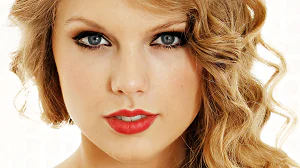
Acne (acne, acne) is a chronic disease of the sebaceous glands and hair follicles. This causes blockage of the glands, increased production of sebum (a special secretion that makes our skin elastic, protects us from infections and is involved in the thermoregulation of the whole body) and as a result, severe acne appears on the face. In this article, we will look in detail at what acne on the face is, its causes and treatment.
About 80% of teenagers and young adults live with this disease, but acne can appear at a later age, after 25 years.
Causes of acne
Causes of acne on the face most often are:
Acne appears on the face in the form of comedones - a clot of sebum and dead cells in the hair follicle.
There are two types of comedones - open (white small, painless pimples, the so-called white acne on the face, in the area of the nasolabial triangle - the area of acne on the face) and closed (black dots, traffic jams).
In itself, clogged pores are not dangerous and can be easily removed with facial cleansing. But if bacteria gets into the pores Propionibacterium acnes, then inflammation begins, which is more difficult to cope with.
Stages of acne:
- Easy stage diseases - less than 10 pustular lesions
- Middle stage diseases - from 10 to 40 foci
- Severe stage characterized by the appearance of many red, scaly purulent elements
Treatment of facial acne in adults

How to treat acne on the face? Modern medicine offers many remedies for acne on the face. Depending on the stage of the disease, all kinds of medications for acne on the face are used - creams, ointments, tablets, gels, lotions.
Preparations for the treatment of facial acne contain active ingredients that:
- block the development of comedones
- destroy existing pustules
- reduce sebum production
- relieve inflammation
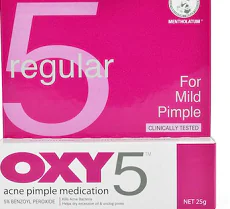
First of all, the drug for acne is used for the face - benzoyl peroxide (OXY5, OXY10). It is an antibacterial drug, but unlike antibiotics, it directly affects anaerobic bacteria, located in the sebaceous hair follicle and destroys them. Wherein does not cause resistance in bacteria and is highly effective for open and closed comedones.
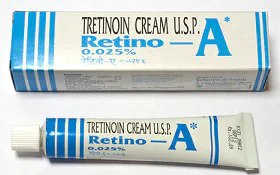
A drug "Tretinoin" (Airol Roche, Retin-A) reduces the number of cells involved in the formation of acne vulgaris. Closed comedones, when treated with this drug, turn into open acne or papules, which are then quite heal quickly without scarring.
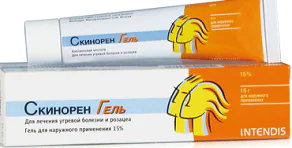
Another effective remedy is azelaic acid. ("Skinoren"), which has a powerful antimicrobial effect. It is used in cases where the skin is already inflamed.

Ointment for acne on the face has a strong drying effect. "Differin". However, it is suitable for people with oily skin types.
Another effective remedy is "Chlorhexidine", to cleanse the skin.
Read a review of acne products at the pharmacy here.
Acne tablets

Tablets for acne on the face are prescribed when the appearance of acne is associated with internal diseases, for example, disruption of the gastrointestinal tract. In this case, doctors prescribe Doxycycline, Isotretinoin or Aknekutan.
It is not recommended to carry out medicinal treatment of acne on the face on your own.
Nutrition for facial acne

Proper nutrition plays an important role in treating the disease. Diet for acne on the face prescribes exclude from the diet sweets, fatty drinks, carbonated and alcoholic drinks, bread, chips, milk and replace them with green tea, yogurt, vegetable salads, fruits and steamed meat and fish.
Necessary replenish the body with vitamins A, B and E (carrots, cucumbers, apricots, sorrel, spinach, black currants, all kinds of nuts, cabbage, cheese, buckwheat, beans), as well as zinc (asparagus, herring, beef stew, oysters and veal liver).
There is a direct connection between healthy skin and healthy intestines, so first of all you need to pay attention to the health of the gastrointestinal tract.
Cleansing the intestines and following a diet will have a beneficial effect on the condition of the skin. Remember the need drink enough purified water. It removes toxins and actively helps cells recover.
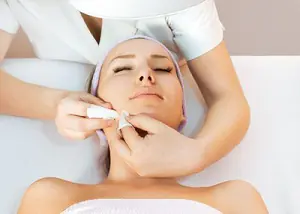
How to get rid of acne on the face and how to cure acne on the face? To do this, you can carry out cleaning procedures acne faces, soft, special facial massages, superficial cryotherapy, peeling face with acne. If the acne is not inflamed, then laser therapy can be used.
Never try to squeeze out blackheads yourself.
This is dangerous in the future spread of infection and the appearance of new pustular lesions. In addition, after mechanical opening of the pustular cavities, rough and unaesthetic marks remain on the skin. scarring.
Washing with warm water using antiseptic soap or a weak solution of furatsilin. After washing, carefully wipe the face with a cotton swab dipped in a solution of salicylic, chloramphenicol or boric alcohol.
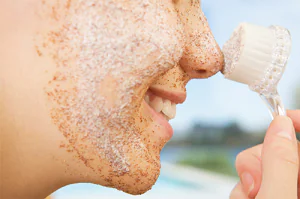
If there are no ulcers, then you can carry out "salt" procedures - use a steam bath to steam your facial skin, then apply a mixture of soap foam, a few teaspoons of soda and salt (only fine salt, otherwise you can injure the skin even more). Perform the peeling procedure with light circular movements, then rinse your face with warm and cold water. Gently dry your face with a towel without rubbing, then apply a light moisturizer and non-greasy cream.

Folk remedies for acne on the face include masks made from egg whites with the addition of alcohol-based lemon juice, rubbing with aloe juice, carrot face masks, masks based on aspirin and cucumbers, as well as masks made from cosmetic clay and honey; they have a drying effect. and cleanses the skin well of dead cells. Such procedures should be carried out no more than 1-2 times a week.
And remember that consultation with a dermatologist is necessary in any case, since acne may hide more serious diseases.
Acne is a common disease not only among teenagers, but also among adults. You shouldn’t be ashamed of it, but you should definitely treat it. Let's talk about the causes of acne on the face and ways to get rid of it, or at least reduce the scale of the disaster.
- Causes of acne
- Types of eels
- Acne symptoms
- How to get rid of acne on the face in adults
- Cosmetology procedures
- Cosmetical tools
- Nutrition for facial acne
- Prevention
Causes of acne
Acne is more common in those with oily skin. And this is due to genetics, not lifestyle. This skin type is characterized by increased secretion of sebum and hyperkeratosis - thickening of the stratum corneum of the epidermis.
Turning oily skin into normal skin is an impossible task, but with effort you can reduce sebum production and prevent pores from becoming clogged. So, what can be the catalyst for acne?
The higher the level of the male sex hormone testosterone in the body, the higher the oiliness of the skin. However, most often the cause of acne is the high sensitivity of the sebaceous gland receptors to their own steroid hormones, so we do not recommend immediately running to the pharmacy for oral contraceptives.
Firstly, a doctor must prescribe them.
Secondly, they are not indicated for all acne sufferers.
Teenage acne is a consequence of a hormonal surge, but this problem can also arise in adulthood due to hormonal instability, which is typical for women during pregnancy and menopause.
A direct cause-and-effect relationship between nutrition and skin condition has not been scientifically proven, but many experts note a “blooming” of rashes after taking:
fatty foods (kebabs, burgers);
products containing sugar, including hidden sugar (sausages, sauces);
yeast products (bread, pastries).
Those who suffer from gastrointestinal disorders also face the problem of acne. That is why we recommend visiting a gastroenterologist and reviewing your daily diet.
If you notice that your skin reacts inappropriately to a new powder or cream, stop using it. Choose products that are labeled “non-comedogenic” on the packaging.
Foundation, contrary to myths, will not harm the skin and will not reward problem-free skin with a scattering of acne. The main thing is to wash off your makeup correctly.
To remove a light BB cream, micellar water will be enough at the first stage of cleansing.
To remove foundation with a dense coverage, the best choice is hydrophilic oil.
Do not make your skin sweat profusely under a layer of tone or powder, that is, give up makeup before going to the fitness club or to the beach.
Another important stage of your beauty routine is exfoliation (chemical or physical). Exfoliants stimulate cell renewal, promoting exfoliation of keratinized particles of the epidermis. This prevents clogging of pores.
Types of eels
All imperfections listed below are classified as acne. Their main differences are in the severity of the problem and, accordingly, in the methods of solution.
They are non-inflammatory elements, most often found on the nose and around the nose, on the chin and forehead. They look like dense plugs with darkening inside.
These dense red formations are usually the result of blockage of the canal and inflammation in the sebaceous gland. Trying to get rid of papules on your own can lead to damage to the sebaceous gland and increased inflammation.
Ball-shaped inflammations with a white head are usually accompanied by redness of the skin around them. This type of inflammatory elements can be accompanied by pain, but drying agents with salicylic acid can specifically cope with it.
This type of inflammation occurs only in severe forms of acne. It is these rashes that lead to the formation of scars on the skin.
No cream can get rid of nodules and cysts on the skin. Only comprehensive measures can help: a course of retinol-based medications in combination with peelings and plasma therapy.
Acne symptoms
The key symptoms of acne are rashes of various types:
This skin condition can also be accompanied by a dull complexion and an oily sheen.
How to get rid of acne on the face in adults
If the rash does not go away for a long time, and its concentration seems too high, do not put off visiting a doctor. The procedures below have proven their effectiveness and are recommended for the correction of acne and post-acne.
Cosmetology procedures
Cosmetologists' offices offer various methods for getting rid of acne, here are just the main ones.
It is carried out using acids (glycolic, lactic, azelaic, salicylic) or retinoids. These components can accelerate the process of cellular renewal.
Peels can be superficial, medium or deep. The cosmetologist will determine which one you need based on the condition of your skin.
The rehabilitation process after medium chemical peels can take up to a week and is accompanied by severe peeling, irritation and redness of the skin.
The mechanical peeling method is based on grinding the skin with a special device with a polishing attachment. Now this method is losing popularity to laser and chemical peels, but the skin recovery period after dermabrasion is much shorter, and the procedure itself usually does not cause pain. Effective for post-acne correction.
Being a more progressive type of dermabrasion, the laser works on the principle of mechanical damage: creating a microburn effect, it causes severe peeling, followed by skin renewal in the selected area. This method is suitable for correcting post-inflammatory pigmentation and scars.
This method is based on the effect of hypothermic effects on the human body: cryopilling causes a cold burn of the skin, which is accompanied by intense peeling of the upper layer of the epidermis.
Cosmetical tools
We tell you what products you can use at home to improve the condition of your skin with acne.
Moisturizer and/or serum are necessary for both oily and dry skin, especially during the treatment period. If there is a lack of hydration, the skin begins to produce more sebum, which leads to clogged pores and the appearance of rashes.
Clay absorbs dirt and sebum. Regular use of such masks can significantly improve the condition of the skin, at least reducing the number of blackheads, reducing oily skin and improving complexion.
Both chemical and mechanical exfoliants are designed to rid the skin of dead skin scales to reduce oiliness and prevent clogging of pores.
Mechanical exfoliants (scrubs) should not be used on skin with inflammatory elements.
When using chemical exfoliants, it is important to pay great attention to sun protection, as they increase the photosensitivity of the skin.
Nutrition for facial acne
The connection between diet and acne has not yet been proven, but the experience of many people shows that consuming dairy products can cause an outbreak of acne. Bakery products and our favorite food “garbage”: chips and candies can also have an undesirable effect.
Prevention
To prevent the appearance of acne, use special cosmetic products that you can choose on your own, but it is better to do this together with a cosmetologist.
Instant Skin Glow Mask, Kiehl’s
Apply the mask to cleansed facial skin, leave until completely dry (5-10 minutes), then rinse.
Recommended for use up to 3 times a week.
Turmeric has an anti-inflammatory effect. Cranberry seed oil is responsible for its antioxidant effect, and the crushed seeds themselves exfoliate dead cells.
Mask “Magic of clay. Exfoliation and tightening of pores”, L’Oréal Paris
Apply to cleansed facial skin, leave until completely dry, and rinse.
Use no more than twice a week, less often is better.
Three types of clay (ghassoul, kaolin and montmorrilonite) normalize sebum production and have an antibacterial effect.
Red algae extract saturates cells with minerals.
Corrective care against imperfections Normaderm, Vichy
Apply daily to cleansed face, avoiding the eye area.
Salicylic acid exfoliates dead skin cells of the surface layer of the skin and reduces bacterial activity. The PhE-Resorcinol molecule accelerates recovery processes.
Gel, scrub, mask “Clean skin 3-in-1”, Garnier
Use the scrub on cleansed skin at least once a week.
Apply the mask to cleansed skin, rinse after complete drying.
Use the cleanser daily during the second stage of skin cleansing.
Zinc regulates sebum production, white clay tightens pores and mattifies the skin, salicylic acid dissolves keratinized scales of the epidermis.



